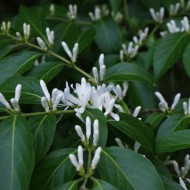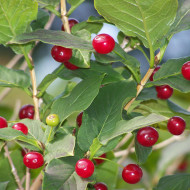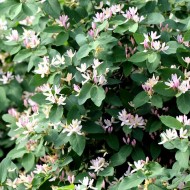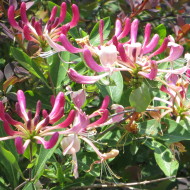Planting and caring for honeysuckle in the Moscow region: tips and advice from experts
Content
The best varieties for growing in the Moscow region
According to their purpose, honeysuckle varieties are divided into two groups. Let's consider them in more detail.
Edible honeysuckle
This group is represented mainly by the shrub form, less often by the standard form. Plant height is considerable - 2-3 m, decorative leaves. According to the ripening period, honeysuckle is early, mid-ripening and late. The harvest from early varieties ripens in June. Productivity per bush is 2–4 kg. All shrubs are self-fertile and require cross-pollination.
Honeysuckle berries are very aromatic and healthy. They differ in shape, size, skin tone and taste. Some berries are sweet and sour, others are tart, with a little bitterness. There is also a dessert flavor. The edible berry is always large, elongated, blue or purple-black in color, covered with a bluish bloom.
The best winter-hardy shrubs that successfully bear fruit in the Moscow region:
- Bakchar giant. Large-fruited variety with purple-blue pear-shaped berries of a dessert taste.
- Long-fruited. A large, elongated berry with a sweet and sour taste.
- Titmouse. A popular variety with very sweet large berries.
- Moraine. An elongated early berry with a dessert taste.
- Nymph. Medium-sized dark blue berry, wavy on the surface, sweet and sour taste.
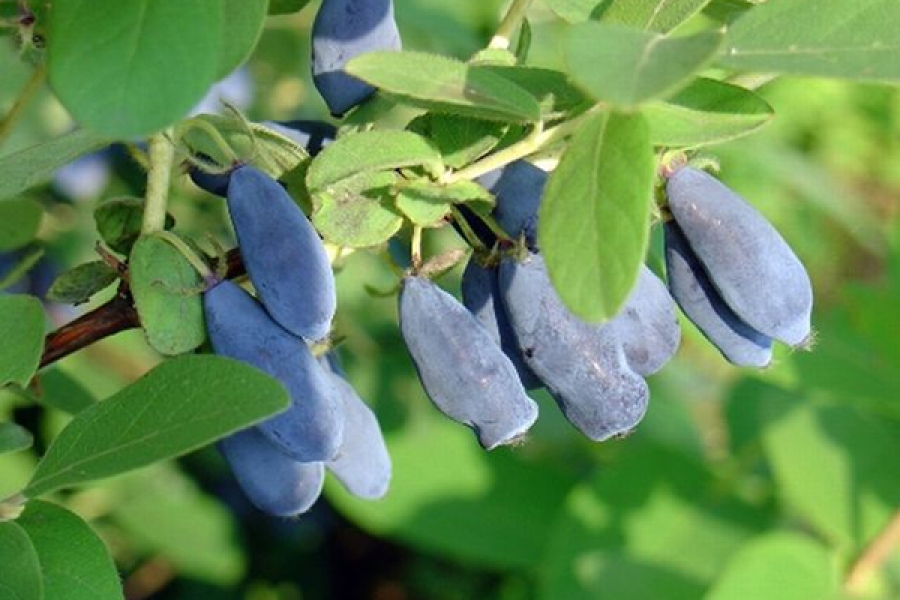
Decorative honeysuckle
Decorative types of honeysuckle are no less popular in the plots. Such plants have beautiful foliage, are easy to prune, bloom for a long time and abundantly, filling the garden with tart aromas. They are found in the form of shrubs and vines. Berries also ripen on them, but they are not eaten due to the content of toxic substances. It is not difficult to distinguish edible honeysuckle berries from decorative ones - they are smaller, red, orange or black, bitter in taste.
The best in this group are:
- Honeysuckle. A decorative liana 4–5 m long, exudes a strong aroma during the flowering period. The berries are bright orange, poisonous.
- Alpine. Shrub up to 1 m, greenish-white flowers, red berries, inedible.
- Tatarskaya. Shrub blooming with pinkish-white inflorescences.
- Maack. Tall, up to 3 m, long-flowering shrub with snow-white flowers and bright red berries.
- Fuchsia. Liana with a record flowering period - up to 2 months. Scourge - 2-3 m, bright orange flowers, exude a strong aroma.
- Maaka
- Alpine
- Tatarskaya
- Fuchsia
- Honeysuckle
Video "How to propagate honeysuckle"
This video shows you how to propagate a plant by cuttings.
How to propagate honeysuckle in different ways
First of all, you need to decide on the timing, choose seedlings and competently prepare a site for planting.
Dates of planting honeysuckle in the suburbs
In the conditions of the Moscow region, honeysuckle can be planted both in the fall and in the spring. Potted plants are planted throughout the warm season. It is better to plant young seedlings with open roots in mid-September so that they have time to adapt before winter, or in early spring, in the second half of April (before bud break).
Location and soil selection
Shrubs are photophilous, so the place where they will be planted should be well lit and ventilated. They grow poorly on excessively moist soils and are contraindicated in lowlands. A site on a small elevation on the south side of a building or fence, which will cover the shrubbery from the wind, is ideal. The soil for honeysuckle needs a loose and fertile soil, with a good drainage layer and a neutral pH level.
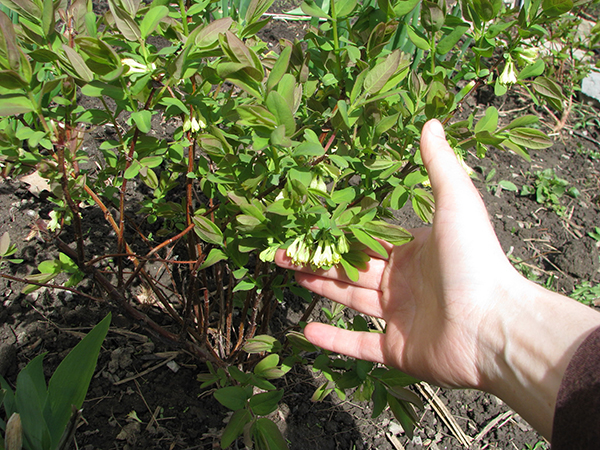
To prepare the site, you need to dig planting holes about 0.5 m deep. Mix the contents of the holes with sand (1: 1), dolomite flour (150-200 g / m²), humus (2-3 kg) and ash (1.5 Art.) Be sure to add superphosphate and potassium fertilizer (30 g each). Fill the pits to half with the resulting substrate, then pour in a bucket of water. After 2-3 days, the holes will be ready for planting.
Preparation of seedlings
Seedlings in pots do not need special preparation, they are transplanted using the transshipment method. Plants with open roots should be examined for diseases and damage, then the roots should be immersed in water for a couple of hours, and immediately before planting, they should be dipped in a clay mash.
Planting and breeding methods
The planting scheme depends on which variety is planted. If edible, it is recommended to maintain a distance of 1.2–1.5 m between bushes. For decorative varieties, the scheme is selected based on the purpose and function of the plant. If this is a hedge, then the bushes are planted in a trench way. When planting, it should be borne in mind that the root collar of the plant should be deepened by 5-7 cm.
Honeysuckle propagation is possible in the following ways:
- dividing an adult bush;
- green cuttings - material from young shoots of the current year is used;
- woody cuttings - they are harvested in the fall, and planted in the spring;
- rooting layers.
Also, the culture is propagated by seeds, but this method is used to select new varieties.

Further care for honeysuckle
After planting, young shrubs need regular watering, feeding, pruning, as well as protection from external factors.
Irrigation rates
The ground around the shrub should always be slightly damp, as if it dries up, the shoots begin to wither. Watering is carried out as needed at the rate of 1 bucket / bush. During periods of intensive shoot growth (late spring) and fruiting, the rate of water consumption increases by 1.5 times.
Lack of watering during fruiting is bad for the taste of the berries. They become bitter and sour.
Top dressing and fertilization
They begin to feed the bushes from 2-3 years after planting. The vegetative period of honeysuckle is short, so 1-2 additional fertilizing per season is enough. At the beginning of spring, saltpeter or urea (1 tbsp. L. Per 1 bucket) is added to the trunk circle. With a lag in growth, the bush is additionally fed with liquid manure or grass infusion. Organic matter (compost, humus) is applied after fruiting no more than a year later.
Pruning and shaping the crown
Young bushes do not need pruning. From the age of 3, autumn pruning is carried out with the removal of excess branches leading to thickening. There should be 4–5 fruit-bearing shoots on the bush, excluding the young growth.Formative pruning is carried out only for 6-7 years. Pruning of ornamental varieties is carried out at the end of the season and, if necessary, in the summer.

Shrub care in the fall
Autumn care comes down to cutting and digging the trunk circle. The last pruning is done after all the leaves have fallen off. If it's time to feed the plants with organic matter, you need to do it. In the climate of the Moscow region, shrubs hibernate without shelter, but if a very cold winter is predicted, the trunk circle can be covered with spruce branches.
Treatment against insects, fungi and viruses
Very rarely, bushes can be affected by powdery mildew, spotting or viral mosaics. To avoid this, at the beginning of the season they are treated with copper sulfate, Fitosporin or Strobi. Strong-smelling plants are effective against the main pests - honeysuckle aphids, leafworms, scale insects: marigolds, sage, lavender. Chemicals are rarely used and only after fruiting.
Growing honeysuckle has already become a favorite pastime for gardeners in the Moscow region. Shrubs are perfectly adapted to the climate of this region, delight with annual harvests and adorn the site with their decorative effect throughout the season.

